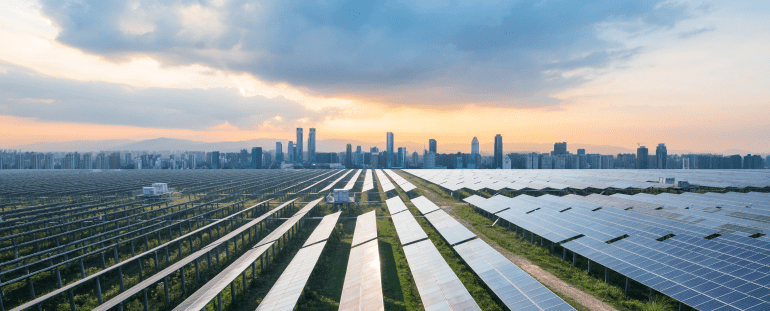What if you could predict — and prevent — expensive wind turbine failures before they even happen? For wind energy professionals, this is no longer science fiction. Thanks to artificial intelligence (AI), it’s fast becoming the new standard for operational excellence, empowering you to manage your operations confidently.
Predictive maintenance transforms how wind farms operate in an industry where unplanned downtime costs billions annually. Using AI-driven insights, energy operators can extend asset life, cut costs, and boost efficiency — all while accelerating the shift to clean energy.
Why Predictive Maintenance Matters More Than Ever
Wind farm operations are complex and costly — and when turbines go offline, the losses add up quickly. Here’s what’s at stake:
- With the potential for soaring maintenance costs, a single day of downtime can translate to significant revenue loss. Predictive maintenance, however, offers a reassuring solution, helping to prevent these financial pressures. Outdated maintenance cycles can be a burden, often leading to unnecessary interventions or missed warning signs. However, predictive maintenance offers relief from this burden, ensuring that maintenance is only performed when necessary. Hidden component failures, such as those in gearboxes, blades, and generators, can be insidious. These components degrade subtly over time, making detection difficult without advanced monitoring systems. Aging infrastructure: Many farms still rely on legacy systems that lack real-time diagnostic capabilities.
The result? There is a growing need for smarter, more predictive systems that spot issues early — and keep turbines spinning.
How AI is Transforming Wind Farm Maintenance
Artificial intelligence and machine learning (ML) revolutionize asset monitoring and maintenance planning. Here’s how:
1. Real-Time Monitoring & Fault Detection
AI-powered sensors track turbine behavior in real-time — monitoring vibrations, wind speed, temperature, and more. These data streams are then analyzed using predictive algorithms to detect faults before they escalate.
“It’s the cheapest form of new electricity in many parts of the world, we’re seeing rapid deployment because the economics and the urgency align.” said Abigail Ross Hopper, president of SEIA.
2. Intelligent Maintenance Scheduling
Rather than sticking to static schedules, AI helps operators plan maintenance around low wind output periods, minimizing disruption and revenue loss.
Studies show that predictive maintenance can reduce O&M costs by 30–50%.
3. Digital Twins for Smarter Simulations
Digital twin technology replicates turbine behavior in a virtual environment — allowing engineers to test potential faults, maintenance decisions, and efficiency upgrades without touching physical assets.
GE Renewable Energy uses digital twins to run real-time diagnostics and simulate failure risks — dramatically improving uptime.
4. Seamless Legacy System Integration
Are you worried about aging tech? Modern AI tools are designed to integrate seamlessly with older systems, ensuring you can leverage AI’s benefits without major overhauls to your existing wind farm infrastructure. For example, solutions from IBM and Microsoft are engineered explicitly for this purpose.
5. Safer Operations & Longer Asset Life
Predictive maintenance reduces the need for manual inspections, improving worker safety. It also helps extend turbine lifespan by maintaining components before excessive wear sets in.
AI in Action: Real-World Results
The proof is in the data:
- BloombergNEF projects up to $5 billion in global O&M savings for wind energy by 2026 due to predictive AI.
- Siemens Gamesa helped clients avoid three-quarters of failures using AI-based monitoring.
- Clir Renewables reports that AI-enabled turbines have shown up to 5% increases in energy output.
These aren't small wins — they're industry-shifting breakthroughs changing how wind farms are built, maintained, and scaled.
Challenges to Keep in Mind
AI adoption isn’t plug-and-play. It takes the right strategy and investment in a few key areas:
- System Compatibility: Choose platforms that can work with your current infrastructure.
- High-Quality Data: Garbage in, garbage out. Clean, reliable sensor data is non-negotiable.
- Skilled Workforce: Teams must be trained to interpret AI-driven insights.
- Compliance: Ensure data ethics and regulatory requirements are met — especially in Europe and North America.
What's Next: Emerging Trends in AI-Driven Wind O&M
As AI tools continue to evolve, expect to see:
- Smarter Forecasting Models: Algorithms like LSTM and XGBoost improve wind prediction accuracy.
- Next-Gen Digital Twins: Offering even more nuanced simulations across turbine fleets.
- Sustainability Metrics: AI is helping quantify carbon reduction from improved O&M strategies, which are vital for ESG and Net Zero goals.
Why Predictive Maintenance is Your Competitive Edge
Think of predictive maintenance as a strategic differentiator — not just a technical upgrade. By using AI to stay ahead of component failures, streamline maintenance windows, and boost turbine output, you gain more than efficiency — you gain a competitive edge.
Whether you’re overseeing project development, advising utility clients, or managing global O&M portfolios, predictive AI is how the best players in wind energy are future-proofing their operations.
Ready to Lead in Wind Operations?
At MetRenew, we understand that predictive maintenance isn’t just a smart fix—it’s a new foundation for resilient, data-driven energy infrastructure. Our services integrate digital twins, real-time analytics, and AI-driven O&M strategies tailored for:
- Independent Power Producers (IPPs)
- Government Agencies
- Utility Companies
- Large Corporations targeting Net Zero
- Project Developers & EPC Firms
- Investors and ESG Funds
Whether you’re optimizing an aging turbine fleet or building your next wind park from scratch, MetRenew can help you maximize uptime, enhance safety, and build a smarter energy future.
Let’s explore how predictive AI can reshape your wind portfolio—reach out to our team today for partnerships, proposals, or full-scale integration support.

